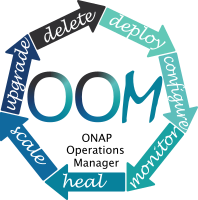OOM Infrastructure Guide

OOM deploys and manages ONAP on a pre-established Kubernetes cluster - the creation of this cluster is outside of the scope of the OOM project as there are many options including public clouds with pre-established environments. If creation of a Kubernetes cluster is required, the life-cycle of this cluster is independent of the life-cycle of the ONAP components themselves.
Minimum Hardware Configuration
Some recommended hardware requirements are provided below. Note that this is for a full ONAP deployment (all components).
RAM |
HD |
vCores |
Ports |
|---|---|---|---|
224GB |
160GB |
112 |
0.0.0.0/0 (all open) |
Customizing ONAP to deploy only components that are needed will drastically reduce these requirements. See the OOM customized deployment section for more details.
Note
Software Requirements
The versions of software that are supported by OOM are as follows:
Release |
Kubernetes |
Helm |
kubectl |
Docker |
Cert-Manager |
Strimzi |
|---|---|---|---|---|---|---|
Jakarta |
1.22.4 |
3.6.3 |
1.22.4 |
20.10.x |
1.8.0 |
0.28.0 |
Kohn |
1.23.8 |
3.8.2 |
1.23.8 |
20.10.x |
1.8.0 |
0.32.0 |
Release |
Prometheus Stack |
Istio |
|---|---|---|
Jakarta |
35.x |
— |
Kohn |
35.x |
1.15.1 |